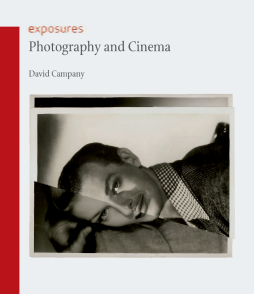
Additional Information
Book Details
Abstract
What did the arrival of cinema do for photography? How did the moving image change our relation to the still image? Why have cinema and photography been so drawn to each other? Close-ups, freeze frames and the countless portrayals of photographers on screen are signs of cinema’s enduring attraction to the still image. Photo-stories, sequences and staged tableaux speak of the deep influence of cinema on photography.
Photography and Cinema a considers the importance of the still image for filmmakers such as the Lumière brothers, Alfred Hitchcock, Michelangelo Antonioni, Jean-Luc Godard, Chris Marker, Mark Lewis, Agnès Varda, Peter Weir, Christopher Nolan and many others. In parallel it looks at the cinematic in the work of photographers and artists that include Germaine Krull, William Klein, John Baldessari, Jeff Wall, Victor Burgin and Cindy Sherman.
From film stills and flipbooks to slide shows and digital imaging, hybrid visual forms have established an ambiguous realm between motion and stillness. David Campany assembles a missing history in which photography and cinema have been each other’s muse and inspiration for over a century.
“Campany suggests that while cinema's relation to photography is often covetous, it is also affectionate. Film may be the dominant medium, but it is nevertheless in thrall to photography; Photography and Cinema doesn't overstate cinema's supremacy, but it does suggest that, where and when it surpasses photography, it also lovingly enshrines it.”
— Art ReviewWinner of the 2009 And/Or Book Award supported by the British Film Institute and Sight & Sound magazine — And/Or Book Award
David Campany is a writer, artist and a reader in photography at the University of Westminster. He is the editor of the anthologies Art and Photography and The Cinematic.
